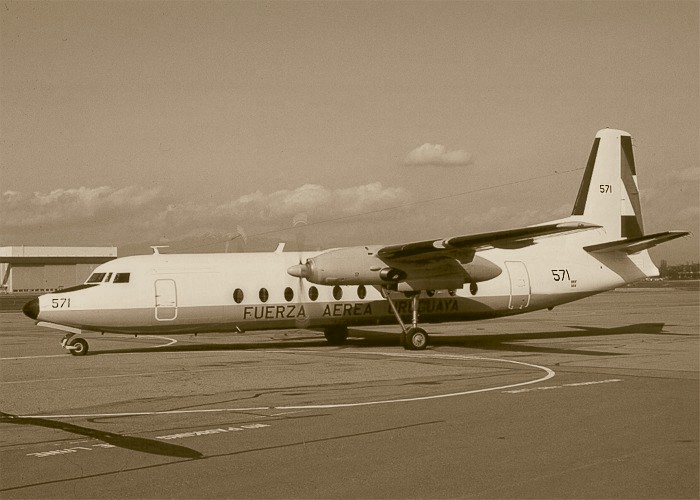Today marks the 45th anniversary of an extraordinary survival story: the crash of Uruguayan Air Force flight 571 in the South American Andes.
The Fairchild FH-227D (a version of the Fokker F27 Friendship) was on a charter flight, taking a rugby union team from Montevideo in Uruguay, to Santiago, Chile. The plane had made an overnight stop in Mendoza, Argentina, because of bad weather.
Because of the weather and the aircraft’s service ceiling of 30,000 feet, the pilots flew south from Mendoza and planned to fly through a low pass in the Andes before turning north to Santiago. But in cloud, the aircraft crashed into two peaks at about 13,800 feet, severing both wings consequitively. The fuselage slid down a mountainside and ended up largely intact, in a snow bank.
The co-pilot, Lieutenant Colonel Dante Héctor Lagurara, survived the initial impact, and mistakenly believed that the aircraft had passed Curicó in Chile, a major town on the western side of the Andes.
But Lagurara’s dead reckoning was way out, probably because it did not take account of strong headwinds; the aircraft was some 90 km to the east and still in Argentina.
In this there were strong parallels with the disappearance over the Andes in 1947 of Star Dust, a British South American Airways Avro Lancastrian. Its fate was not discovered for more than 50 years, until pieces of wreckage began to emerge from snow and ice. It is assumed that the pilots mistakenly believed they had cleared the Andes and were therefore safe to descend, not being aware that they had been flying against a jet stream.
The initial search for flight 571 was cancelled after eight days. The white aircraft blended in with the snow, making it virtually invisible from above, and the survivors lacked the materials to write an SOS message. The aircraft radio could not be used to call for help because it required alternating current.
Of the 45 on board, 33 had survived the crash but only 16 lived to be rescued. Six died in the days after the crash and eight were killed when an avalanche buried the fuselage. It took three days for the survivors of this second disaster to dig themselves out. Three more survivors died over the next five weeks. Two survivors were eventually able to walk out of the mountains, and the remainder were rescued after 72 days. They had had to resort to eating the flesh of their dead team mates. The crash has been the subject of several books, films and documentaries, including Survive! (1976) and Alive (1993).
Flight 571 was the second flight over the Andes to take the lives of a sporting team. In 1961, LAN Chile flight 621 a DC-3 carrying members of top-division Chilean soccer team Green Cross disappeared on a flight from Castro, in the country’s south, to Santiago. It was not until 2015 that a team of mountaineers came upon the wreckage, including human remains, about 350 km from Santiago at an altitude of more than 10,000 feet. According to a Washington Post report, the climbers refused to reveal the exact location for fear the site would be looted.
The crash of flight 571 is a remarkable story of survival decades before technologies such as satellite navigation and mobile phones. It is also a reminder not to be smug about any of these things: despite extraordinary advances in technology and safety aircraft are still being flown into terrain (although more rarely these days), or disappearing. In a sad postscript, a Piper Cub crashed during a flypast to commemorate the event this week, in Uruguay, killing its passenger.


